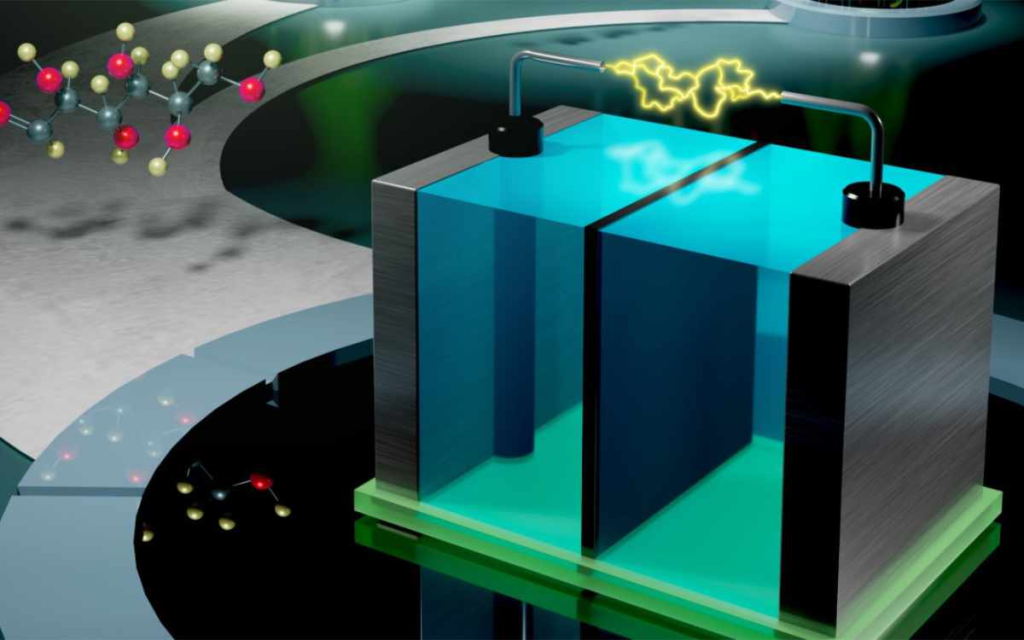
Scientists are taking cues from biology to rethink how we store energy.
As the world searches for alternatives to lithium-ion batteries, researchers are turning to materials that are safer, cheaper, and easier to source. One new idea comes straight from nature: using vitamins and sugars as the foundation of a battery.
In a new study, a team of researchers has developed a flow cell battery powered by vitamin B2 (riboflavin) and glucose.
The system mimics how the human body generates energy from food, using enzymes and natural molecules to convert glucose into usable power.
The result is a proof of concept for a non-toxic, low-cost, and bio-inspired energy storage system.
The researchers, led by Jong-Hwa Shon, designed a prototype that uses riboflavin as an electron mediator. In the body, riboflavin helps transport energy during metabolism.
Inside the battery, it performs a similar role by transferring electrons between the electrodes and the glucose-based electrolyte, effectively generating electricity from sugar.
“Riboflavin and glucose flow cells can generate electricity from naturally derived energy sources,” said Shon, the study’s lead author.
“Using non-toxic components that are both inexpensive and naturally abundant, this system offers a promising pathway toward safer and more affordable residential energy storage.”
Flow cell batteries differ from conventional batteries because they store energy in liquid electrolytes that circulate through the system. As the electrolytes move between the positive and negative electrodes, they undergo chemical reactions that release or store energy.
Glucose, found in nearly all plants, has emerged as an attractive candidate for these systems because it’s renewable, stable, and widely available.
Replacing metals with vitamins
Most glucose-based batteries so far have relied on noble metal catalysts such as platinum or gold to break down sugar molecules and release electrons. These materials are expensive and hard to scale, and the power output of such batteries remains limited.
The new design replaces these metals with riboflavin, which is stable even at the high pH levels needed for glucose electrolytes.
Shon and his collaborators, including Ruozhu Feng and Wei Wang, built their prototype with carbon electrodes. The electrolyte surrounding the negative electrode contained glucose and active riboflavin, while the positive side used either potassium ferricyanide or oxygen.
The researchers compared both configurations to test the vitamin’s catalytic performance and long-term potential.
Promising results and next steps
The potassium ferricyanide cell achieved a power density at room temperature similar to commercial vanadium flow batteries, showing that riboflavin could perform on par with metal-based systems.
The oxygen-based version reacted more slowly, but it offered a more practical and cost-effective path for large-scale production.
The team discovered that oxygen can degrade riboflavin when exposed to light, which leads to self-discharge. Still, the oxygen cell delivered a higher power density than earlier glucose-based designs.
The researchers plan to address the light sensitivity issue by modifying how the vitamin interacts with the electrolyte and by improving the engineering of the flow cell itself.
The riboflavin–glucose system could be an important step toward sustainable energy storage if further developed. With natural, biodegradable, and inexpensive components, such batteries could one day provide an eco-friendly alternative for powering homes or small devices without relying on toxic metals or complex supply chains.



